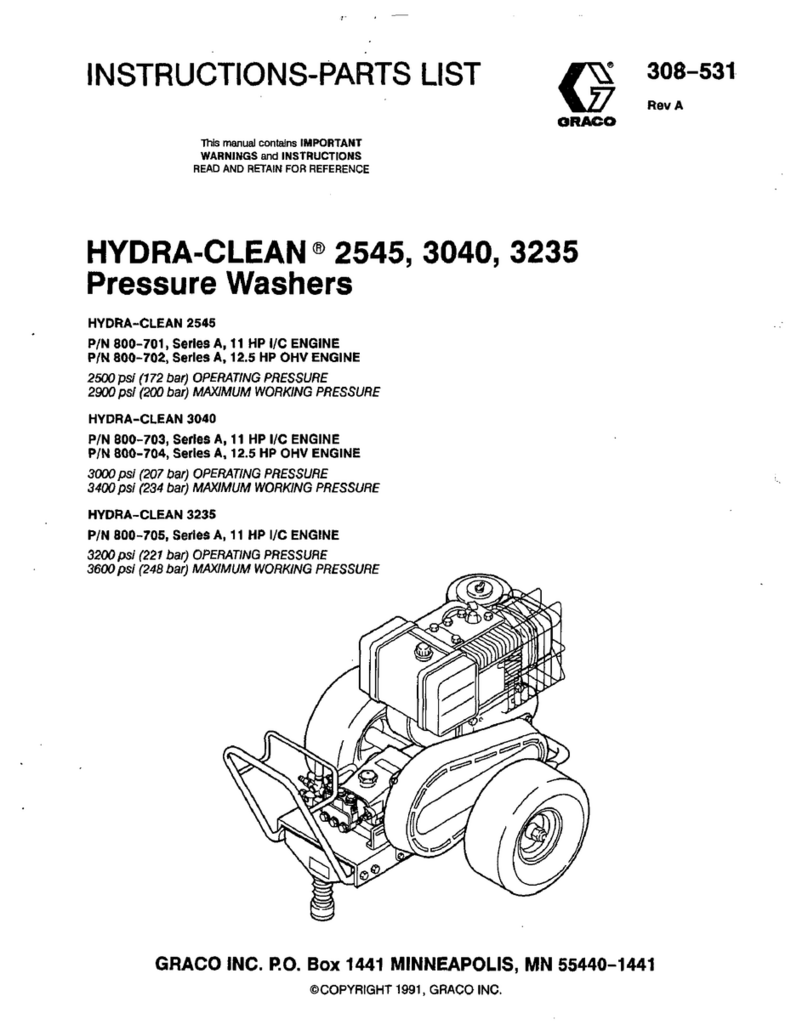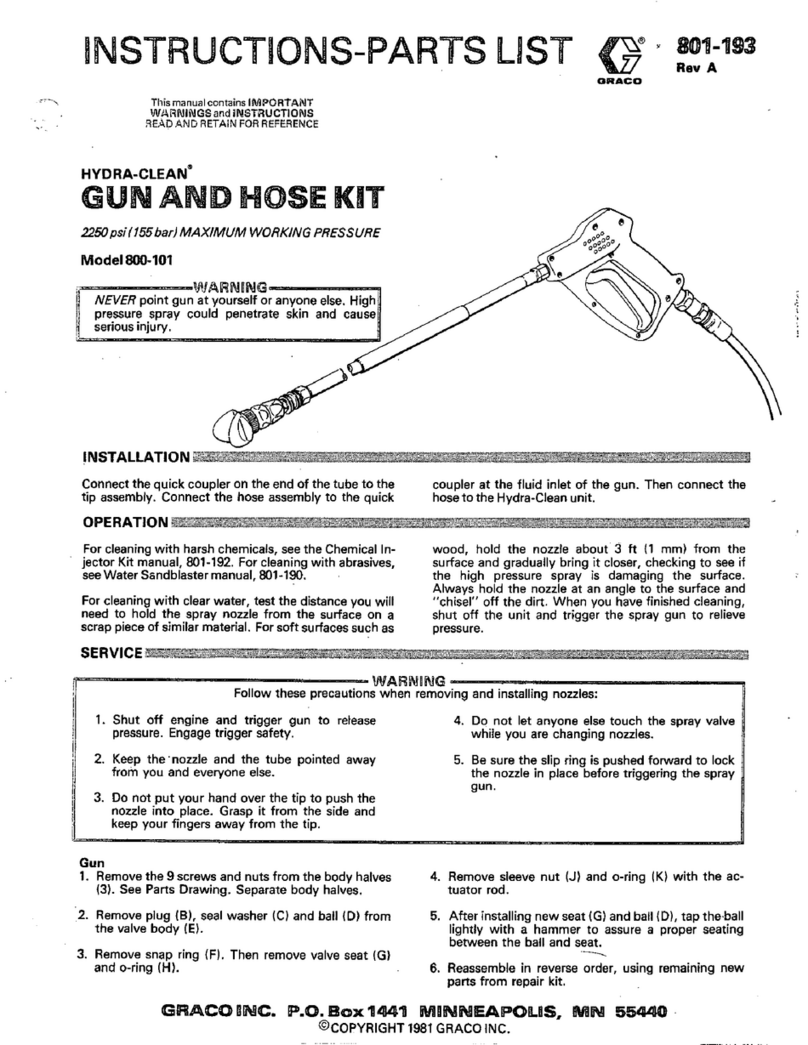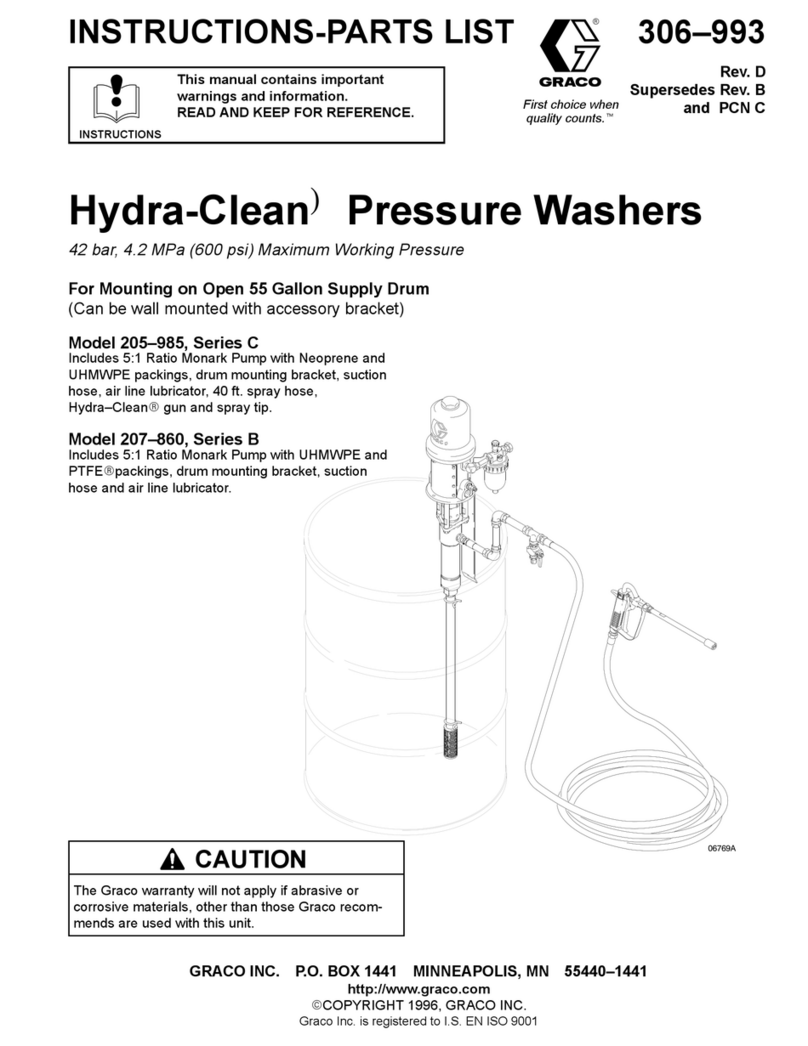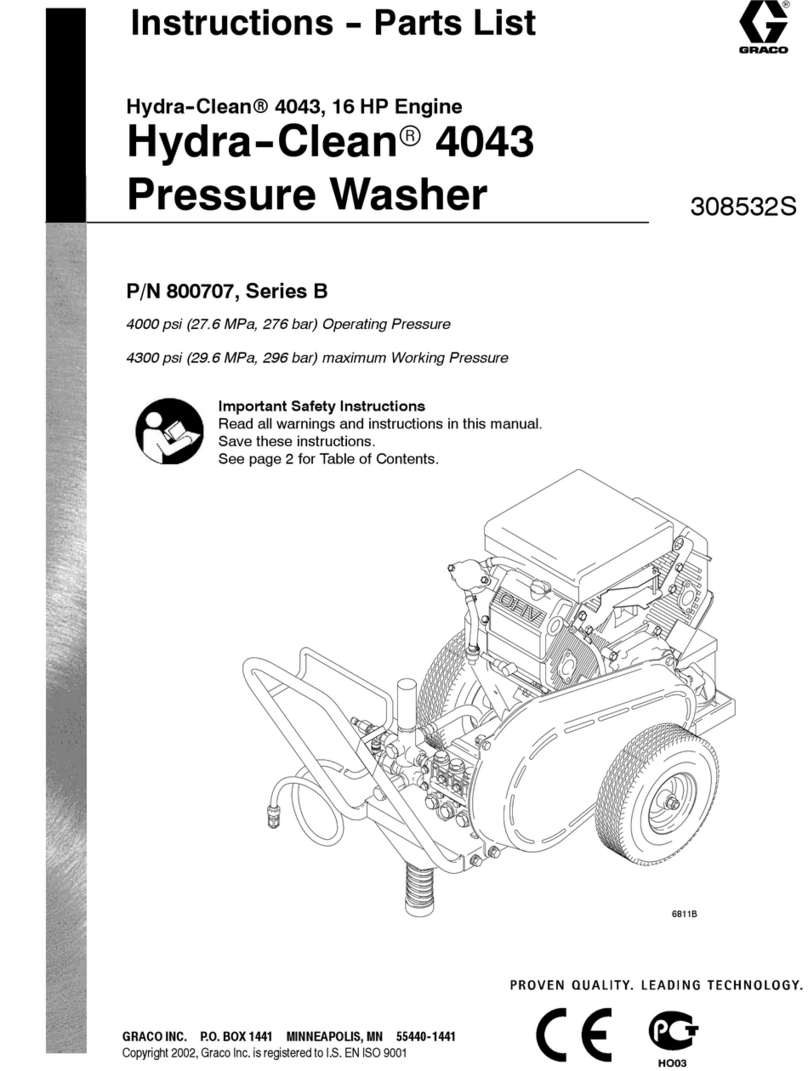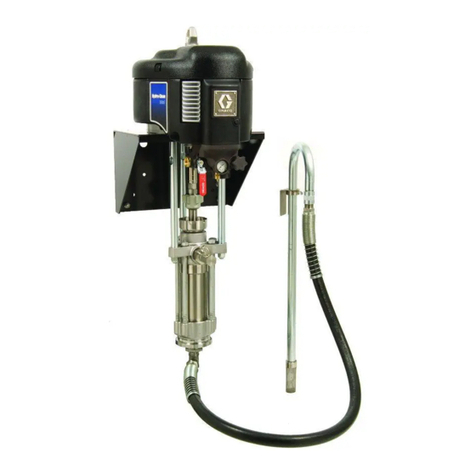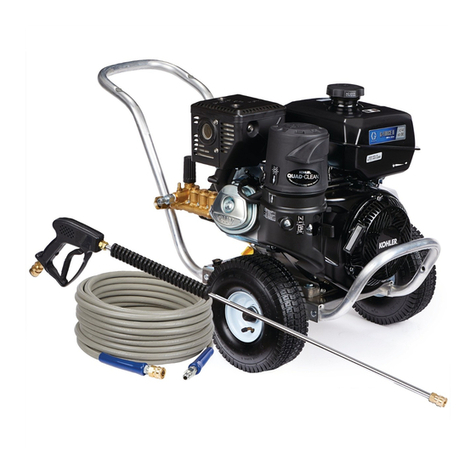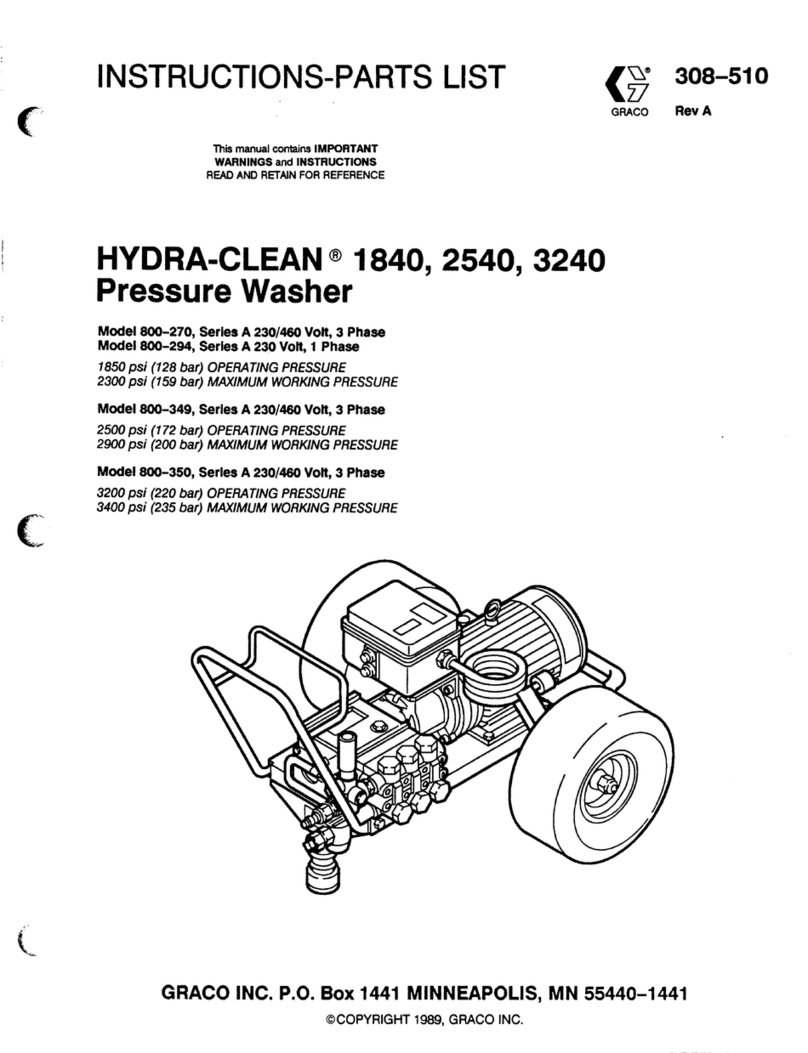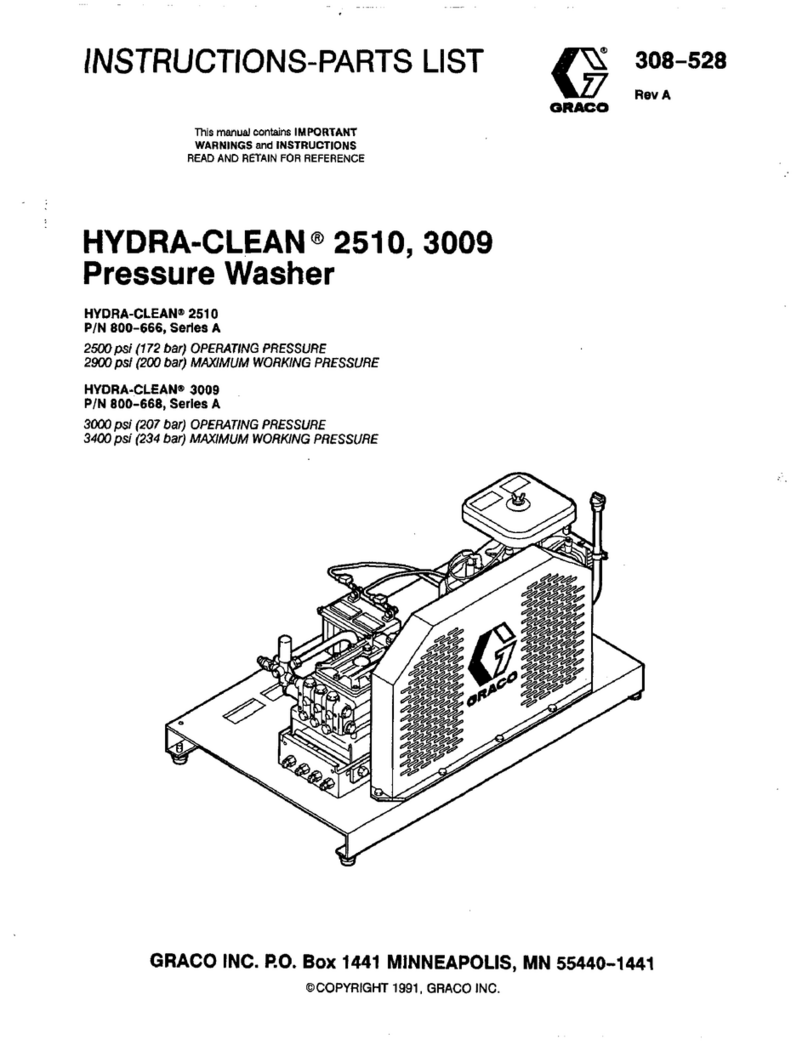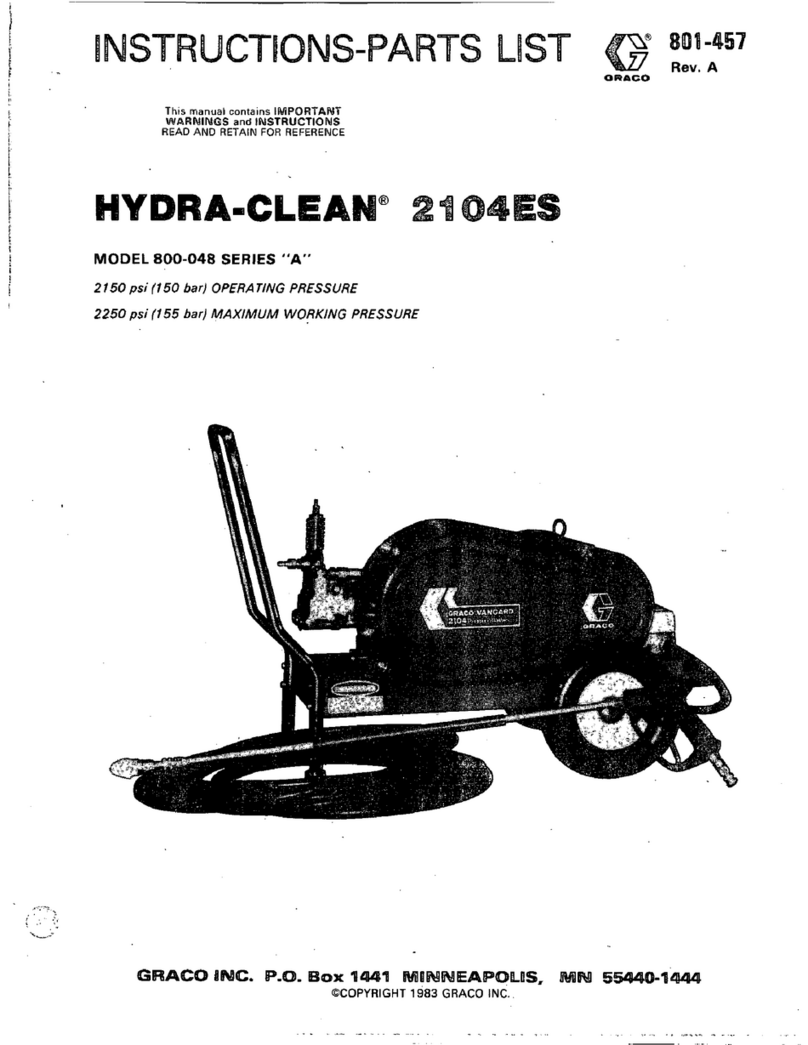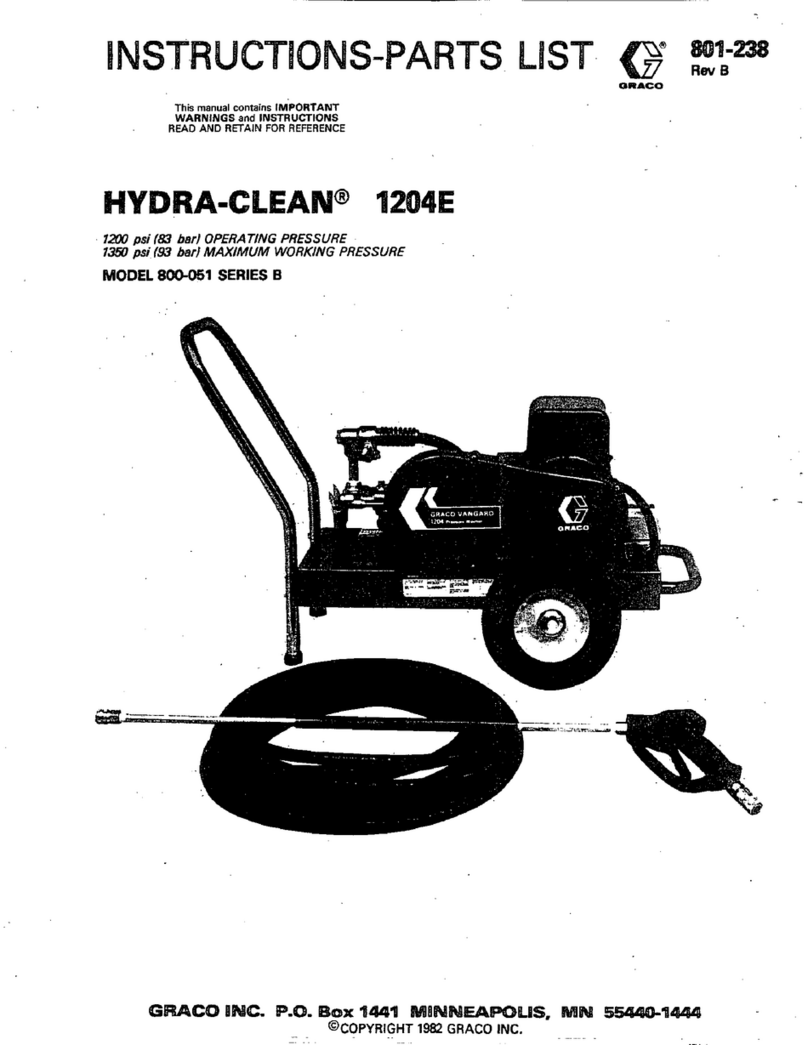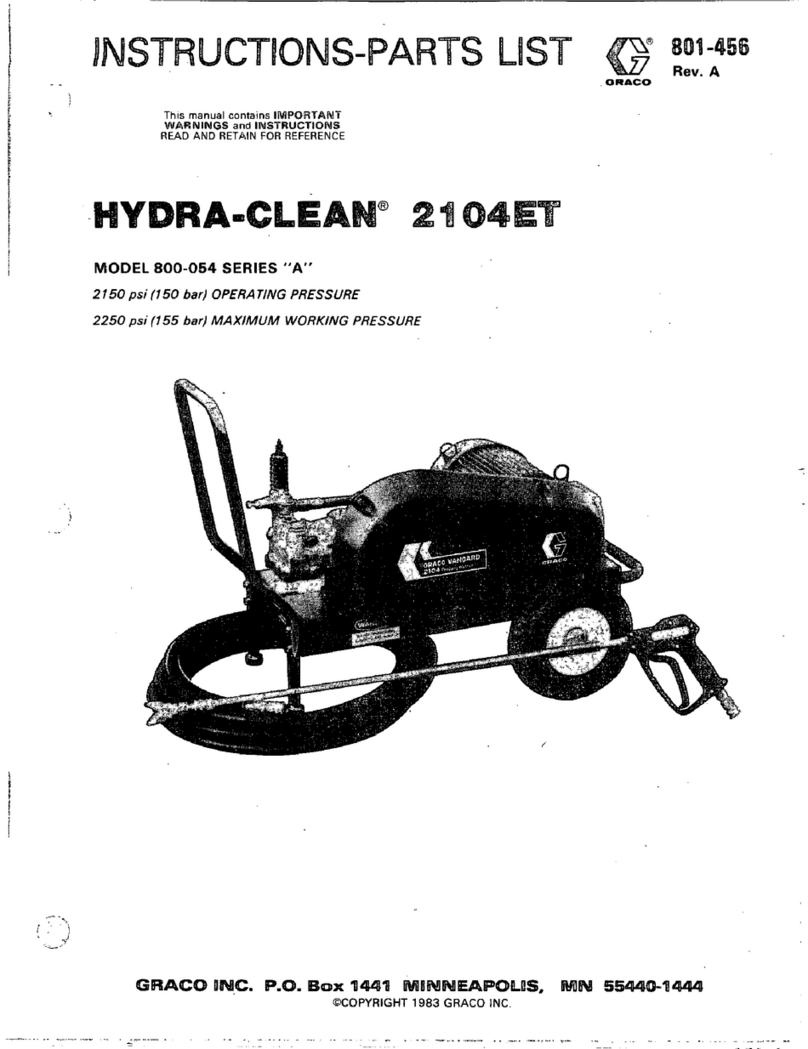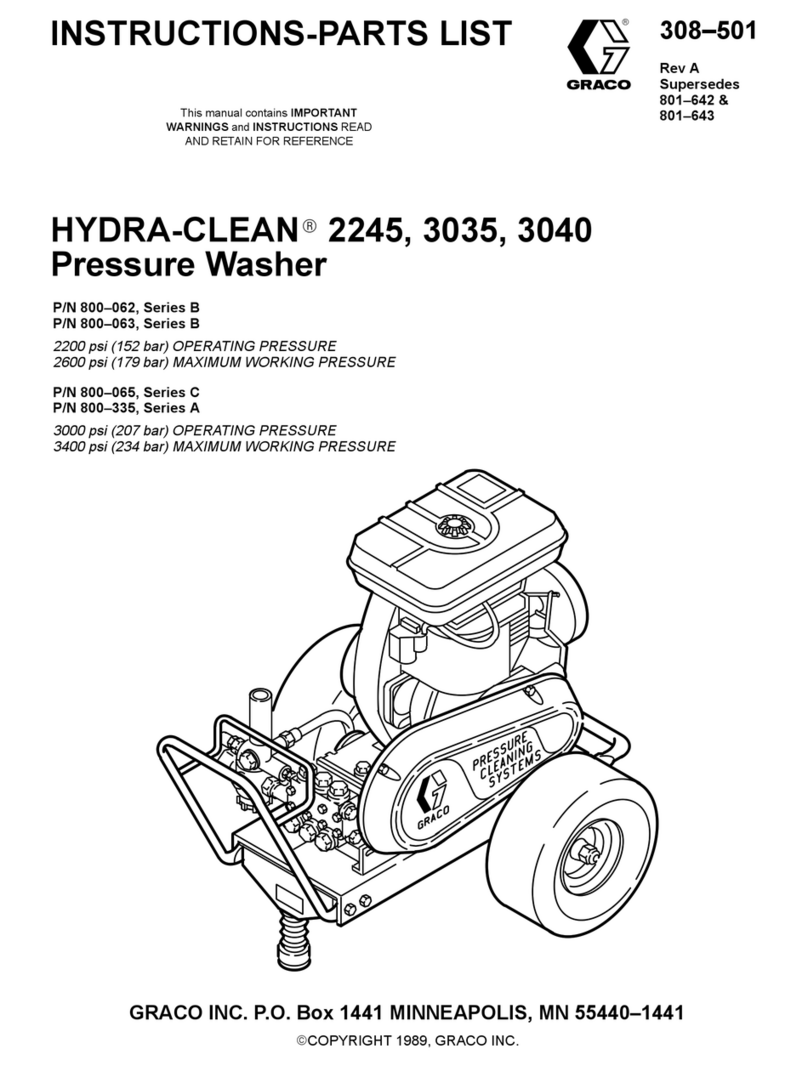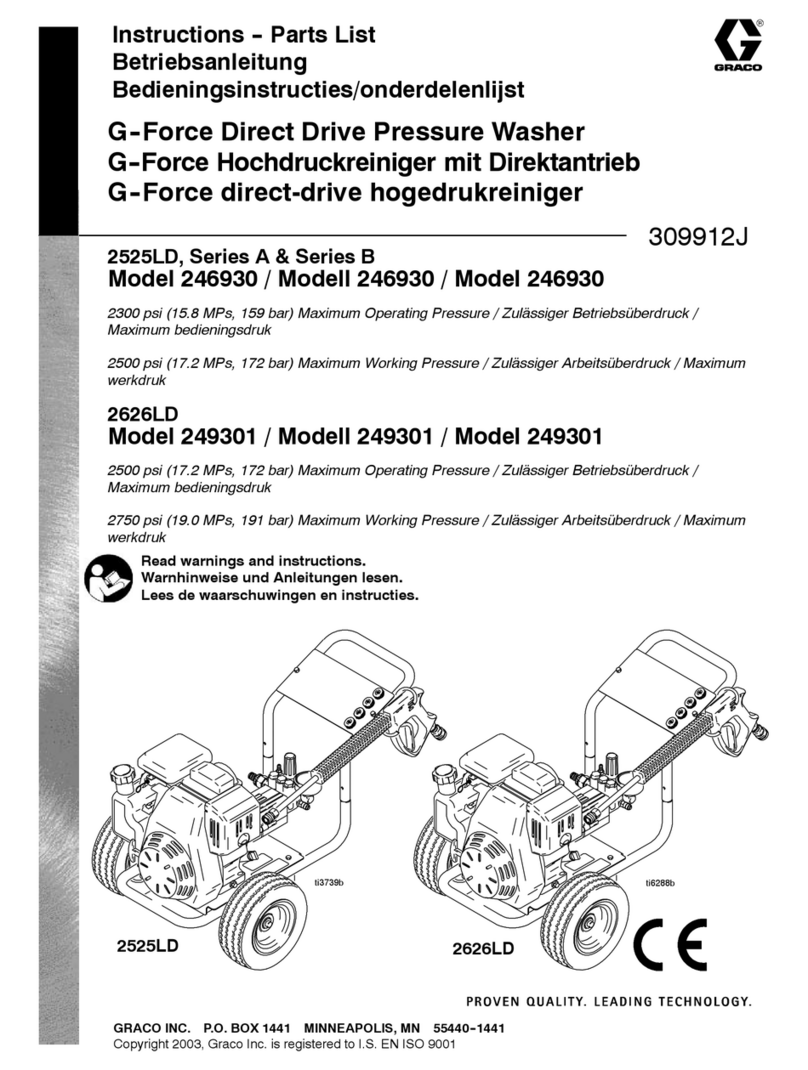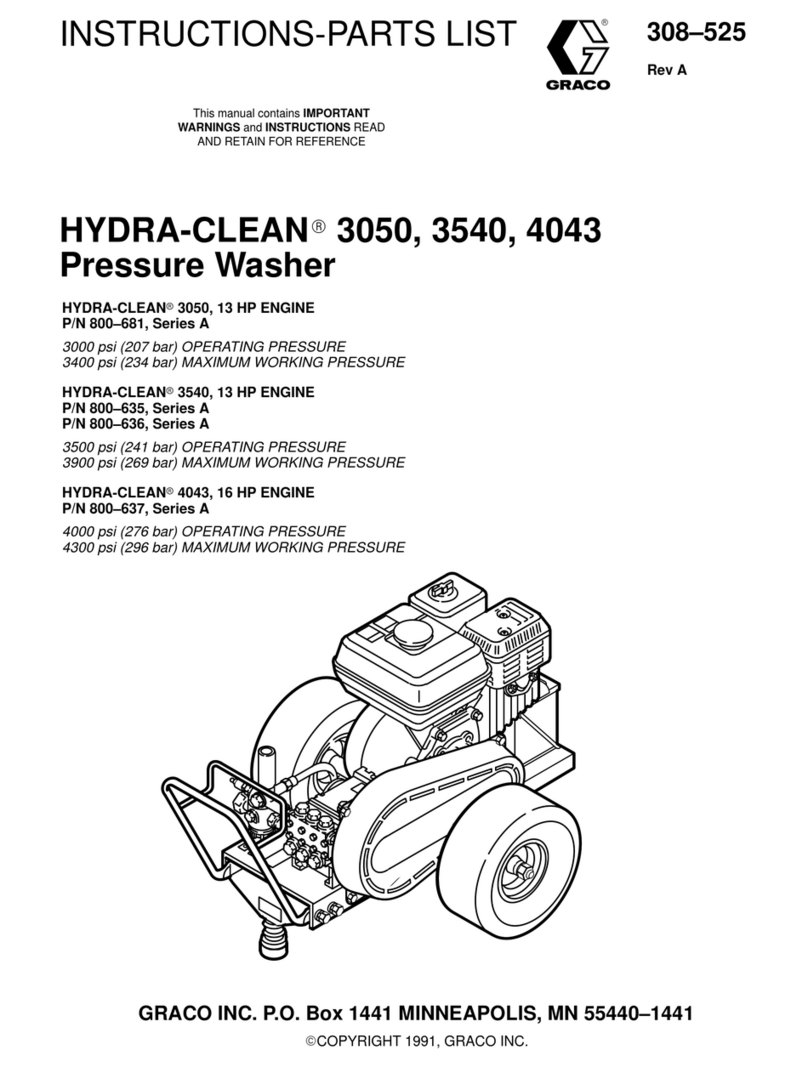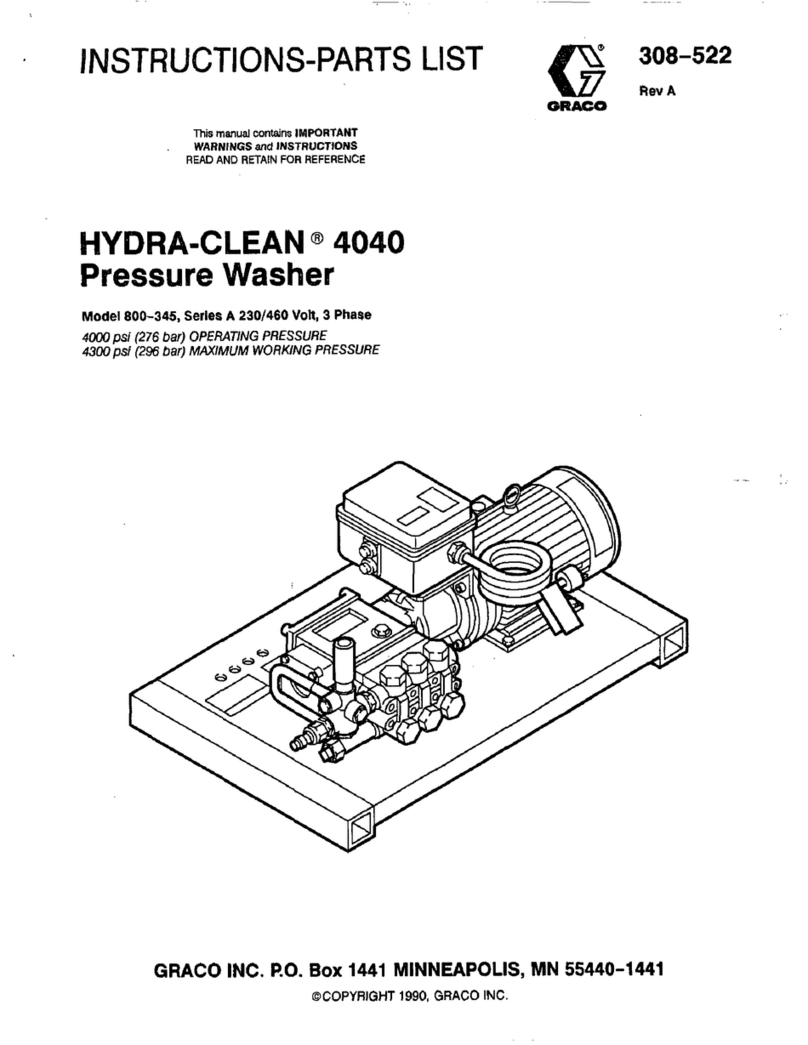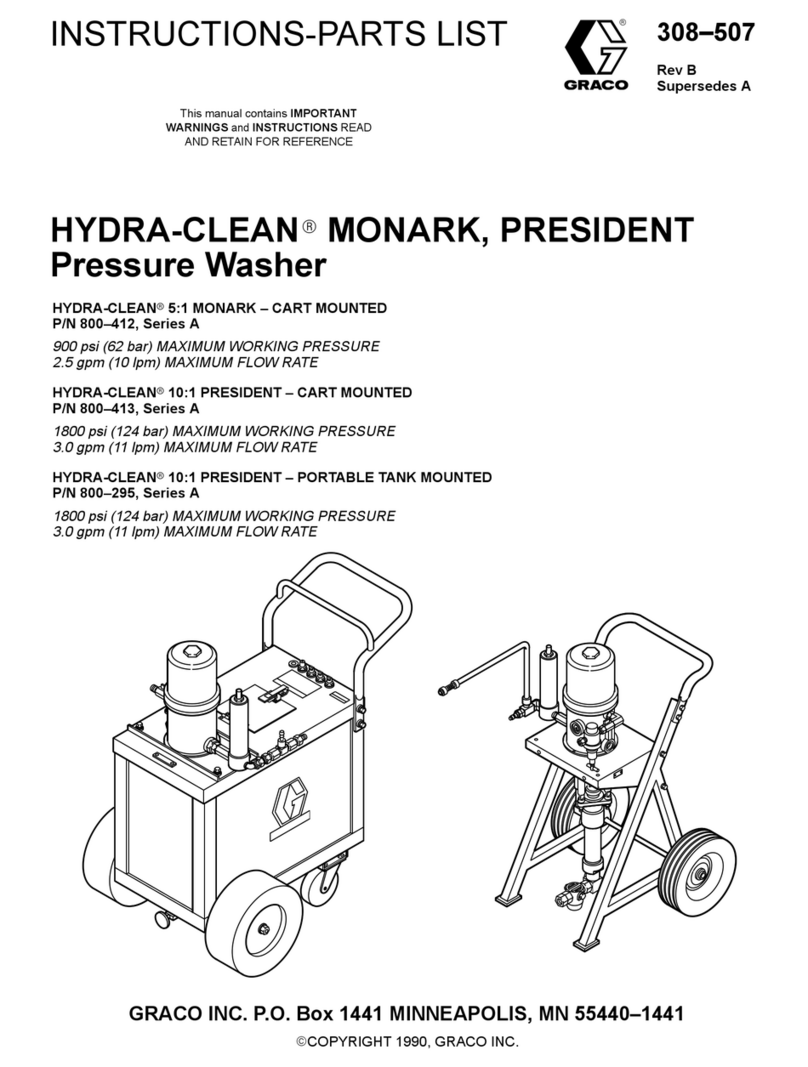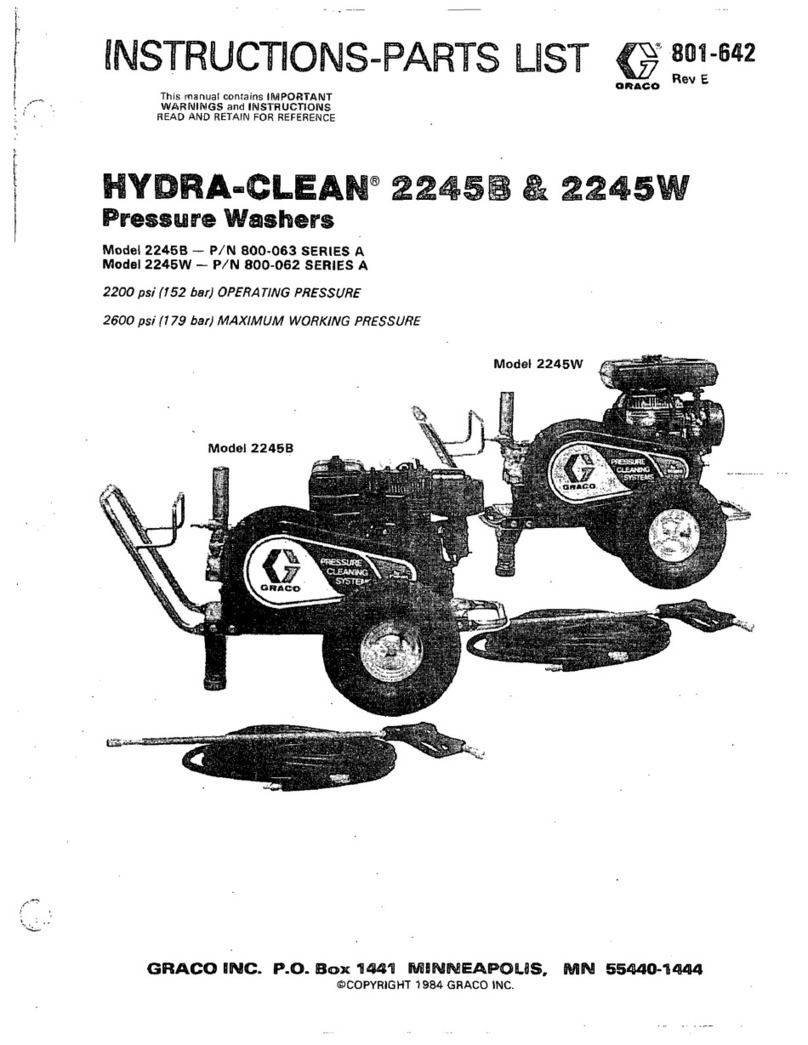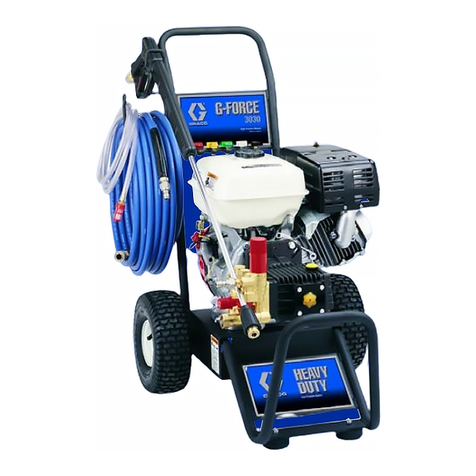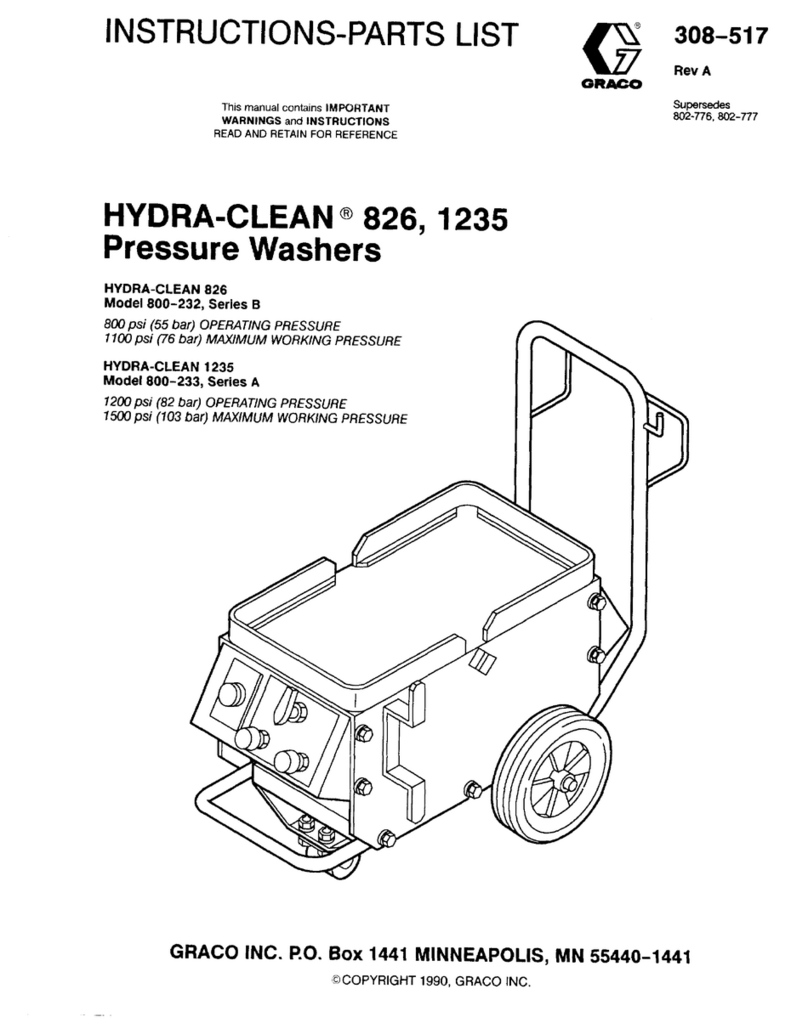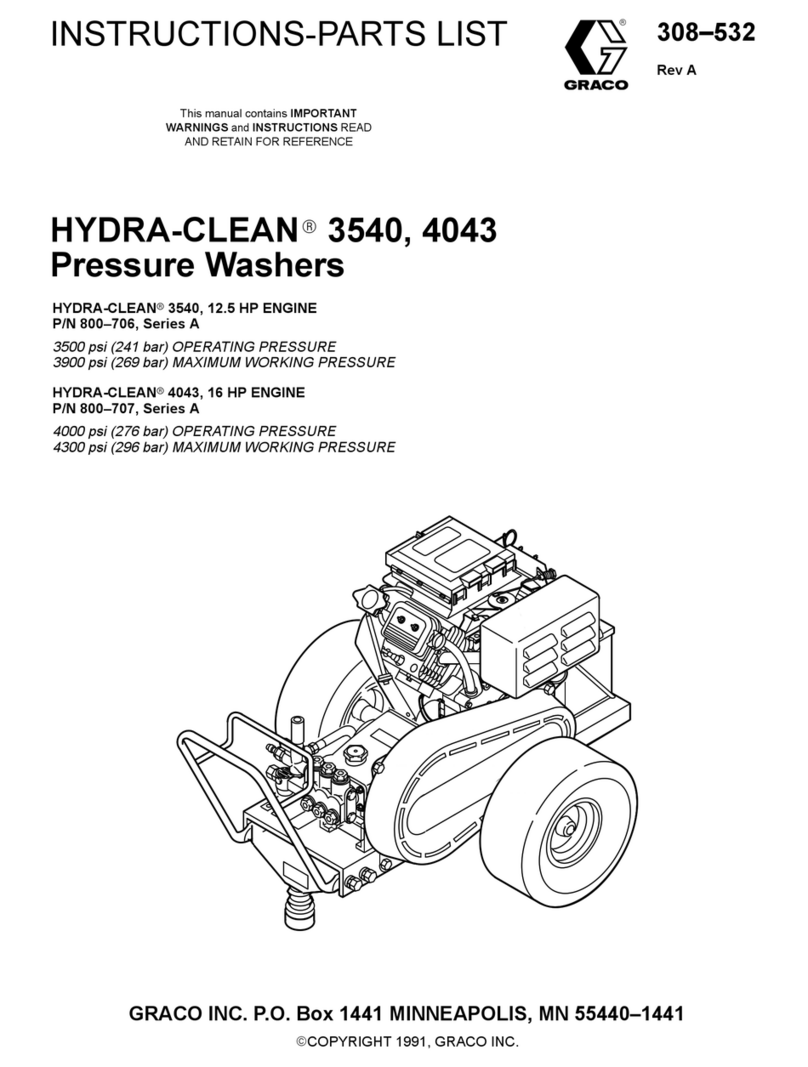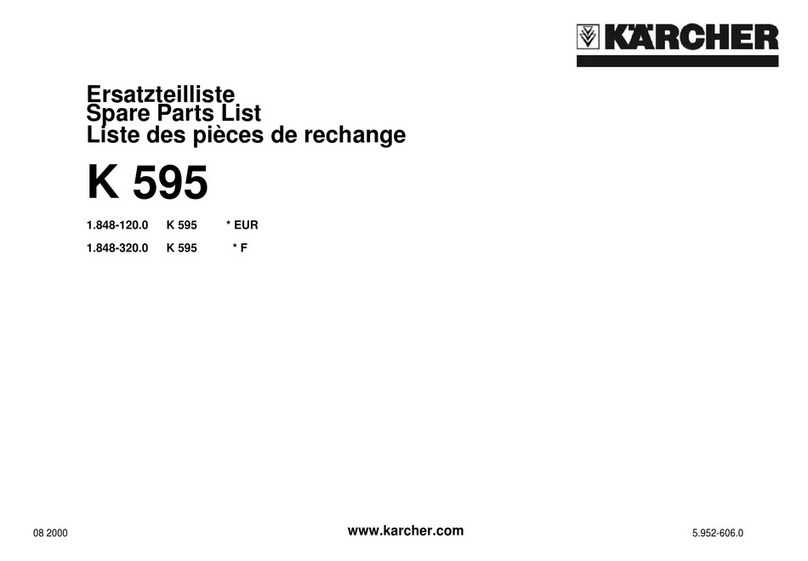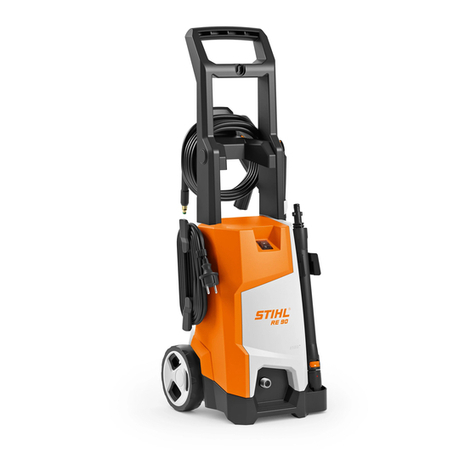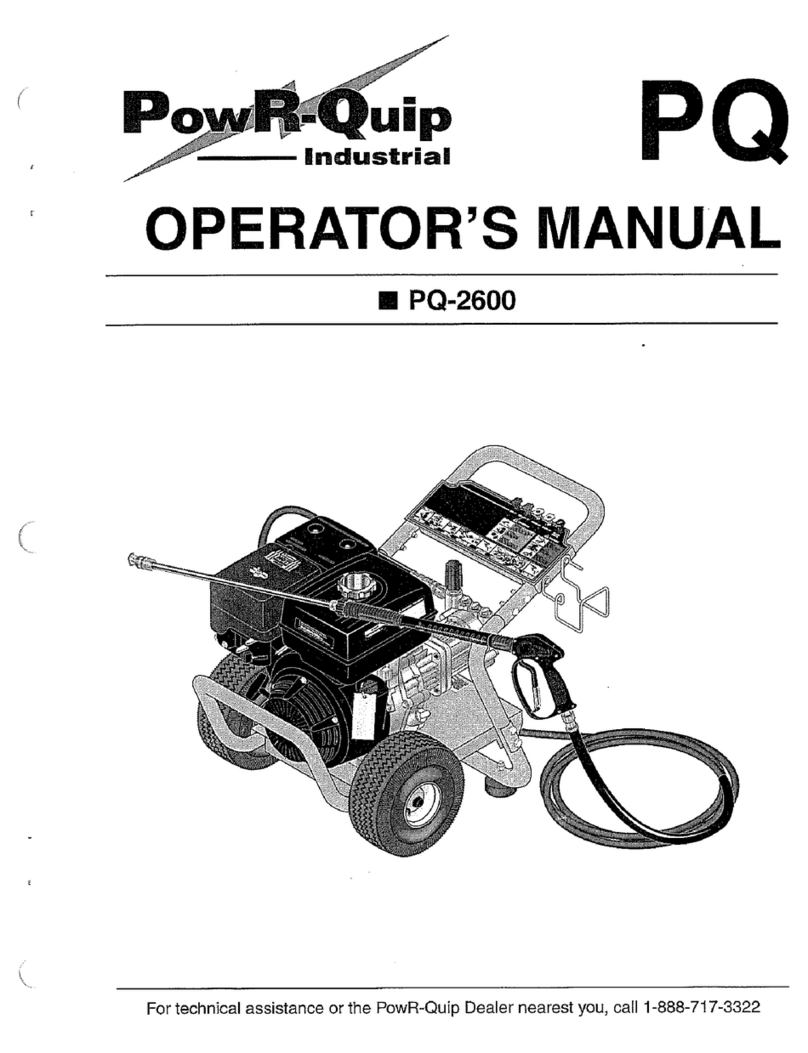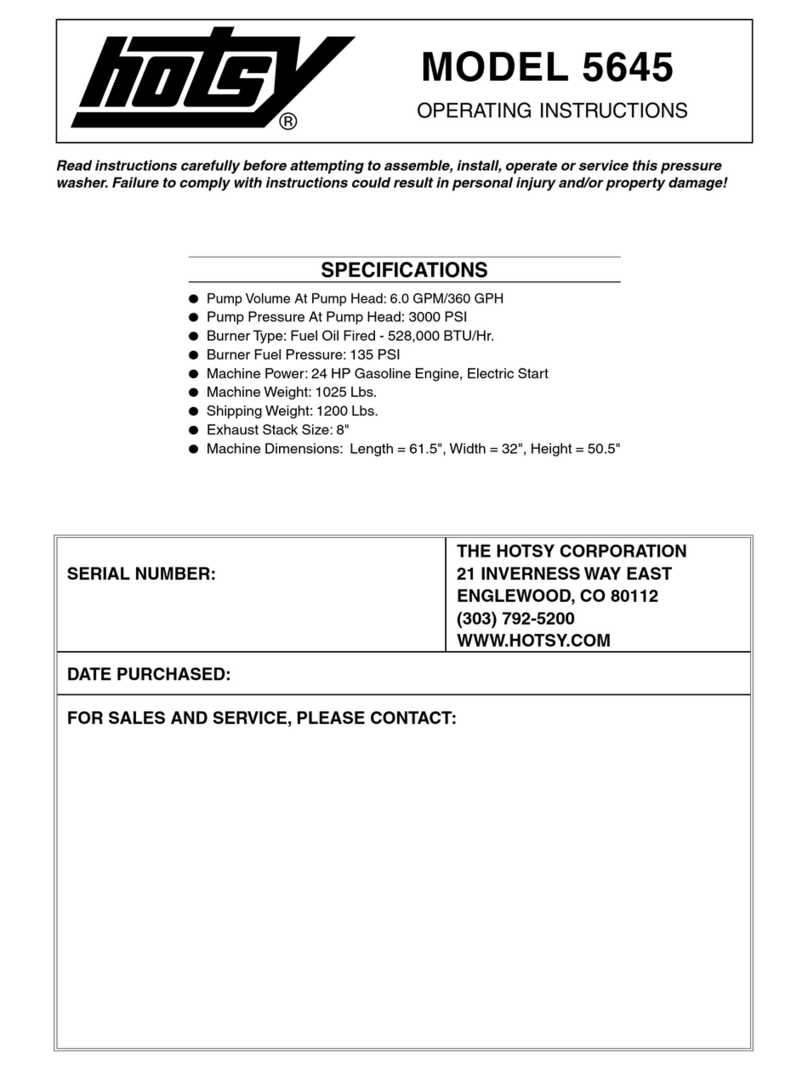
General Safety
Any misuse of the pressure washer or accessories,
':.
such as overpressurizing, modifying parts, using
incompatible chemicals and fluids, or using worn or
damaged parts, can cause them to rupture and result
other serious bodily injury. fire, explosion or property
in
injection, splashing in the eyes or on the skin, or
damage.
NEVER alter or modify any part of this equipment;
doing so could cause
it
to malfunction.
CHECK all-spray equipment regularly and repair or
replace worn
or
damaged parts immediately.
chemical manufacturer's literature regarding the use
If using
'a
chemical injector, read and follow the
of
protective eyewear, clothing and eq!ipment.
System Pressure
OPERATING PRESSURE. Be sure that all spray
This sprayer can develop 2000 psi
(138
bar)
equipment and accessories are rated to withstand
the maximum working pressure of this sprayer.
DO
component or accessory used
in
the system.
.'
NOT exceed the maximum working pressure of any
Chemical Compatibility
BE SURE that all chemicals used
in
the chemical
injector are compatible with the wetted parts of the
hose, gun, wand
and
tip, as given in. the Technical
Data on page 23. Always read the chemical manu-
facturer's literature before using any chemical
in
this
pressure washer.
dangerous. If the hose develops a leak, split or
High pressure fluid
in
the hoses can be very
the high pressure spray emitted from
it
can cause an
rupture due to any kind of wear, damage or misuse,
injection injury
or
other serious bodily injury or
property damage.
.
TIGHTEN all fluid connections securely before each
use. High pressure fluidcan dislodge
a
loosecoupling
or allow high pressure spray
to
be emitted from the
coupling.
1
NEVER fill the fuel tank while the
unit
is running or
hot. Fuel oil and kerosene are combustible liquids
and when spilled on a
hot
surface can ignite and
cause a fire. Always fill tank slowly to avoid spilling.
NEVER
operate
unit
with burner on
in
a closed
building without proper ventilation. The exhaust by-
products contain carbon monoxide, a poisonous.
odorless, invisible gas which can cause serious
illness or death if inhaled.
TERMS
WARNING or
DANGER:
Alerts user to avoid or
correct conditions that could cause bodily injury.
>-
.
,.
~.,
~
..
.
. ...
!,
I,
,
.
i.
CAUTION:
Alerts user to avoid or correct conditions
..Le.
that, could cause damage to or destruction of
equipment.
information.
NOTE:
Identifies helpful procedures and
,3
entire hose
for cuts, leaks, abrasion, bulging cover, or
NEVER Use a damaged hose. Before each use, check
damage or movement of the hose couplings. If any of
these conditions exist, replace the hose immediately.
DO
NOT
try to recouple high pressure hoseor mend
it
with tape or any other device. A repaired hose cannot
contain the high pressure fluid.
HANDLE AND ROUTE HOSES CAREFULLY.
Do
not
pull on hoses to move the pressure washer. Do not
use chemicals which are not compatible
with
the
inner tube and cover of the hose. DO NOT expose
below -40°F (-40OC).
Graco hose to temperatures above 200°F
(93°C)
or
MOWNG
PARTS HAZARD
Moving parts can pinch or amputate your fingers or
other body parts. KEEP.CLEAR of moving parts when
starting or operating the pressure washer. Followthe
or servicing the pressure washer to .prevent
Pressure Relief Procedure, page Z,.before checking
discharging high pressure fluid from the gun.
IMPORTANT
United States Government safety standards have
been adopted under the Occupational Safety and
Health Act. These standards-particularly the
General Standards, Part 1910, and the Construction
Standards, Part 1926-should be consulted.
803-010
3
